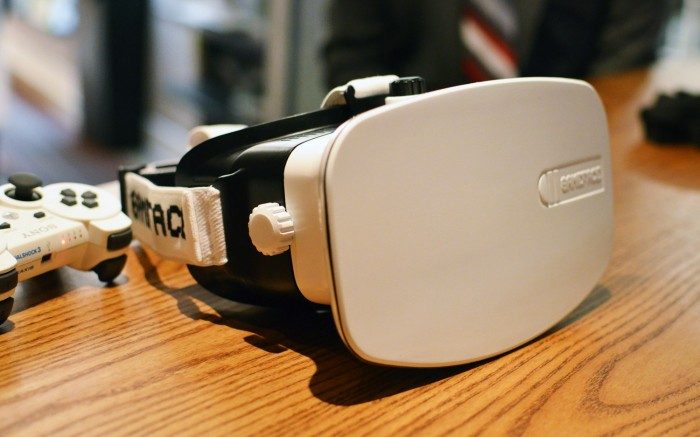Gameface labs, a company who are focusing on mobile virtual reality, have announced their latest VR headset, to be based on the powerful mobile SoC (System on Chip) the nVidia TK1 and sporting a 1440p Samsung fabricated Super OLED panel.
Gameface have been pushing the virtues of mobile and untethered virtual reality for some time now, and for a while had the highest resolution VR headset out there with it’s Mark 5 prototype. Now the company has launched an updated and upgraded version of the Gameface, now labelled as an HMC – that’s Head Mounted Console.

The new unit sports a Samsung manufactured 1440p Super AMOLED display running at 60Hz and delivers an impressive sounding 100 degrees FoV – bringing it in line with Samsung’s Galaxy Note 4 based HMD the Gear VR. The refresh rate may however be increased as they work towards the developer kit model.
The real news here though is the engine that powers the visuals. Sporting a custom PCB, the EP1 is powered by nVidia’s latest SoC solution, the TK1 (soon to be updated to the TX1). The power-efficient “embedded supercomputer” silicon sports 4G of RAM and the custom PCB bolts on a Hillcrest / Bosch IMU for tracking head motion.

The unit comes in at around 445g in weight and sports a custom cooling solution (clearly that processing power generates a little heat), venting out of the top of the unit with airflow generated by a (hopefully quiet) radial fan.

nVidia’s Tegra K1 technology, based on their ‘Keplar’ architecture, was announced last year and pushes nVidia’s vision of the GPU as a dual purpose CPU and 3D Rendering engine. Through the use of their CUDA parallel processing pipeline, nVidia are positioning themselves as the go-to force in mobile computing – taking a shot across Intel’s bows. The X1 SoC (present on the TX1 PCB Gameface are aiming to deliver in the developer kit) is more powerful still and made it’s debut at CES in January.
It’s interesting to hear the term ‘Head Mounted’ Console being pushed here. It’s actually a useful clarification in the distinctions between tethered, PC or console dependent VR Headsets and entirely self contained portable entertainment units like the Gameface EP1 and Samsung’s Gear VR.
Not on display in the EP1 are planned stereoscopic cameras and a new lens solution, which we’ll find out more on soon. For now, the Gameface is targetting content developed for Google’s ‘Cardboard’ initiative and leverages the latest ‘compute APIs’ such as OpenGL 4.5, DirectX 12.0 and CUDA 6. The EP1 will also form part of Razer’s new Open Source Virtual Reality (OSVR) initiative, launched at CES earlier in the year.
We’re looking forward to getting our hands on this new mobile VR powerhouse. As soon as we do, you’ll be the first to know.







